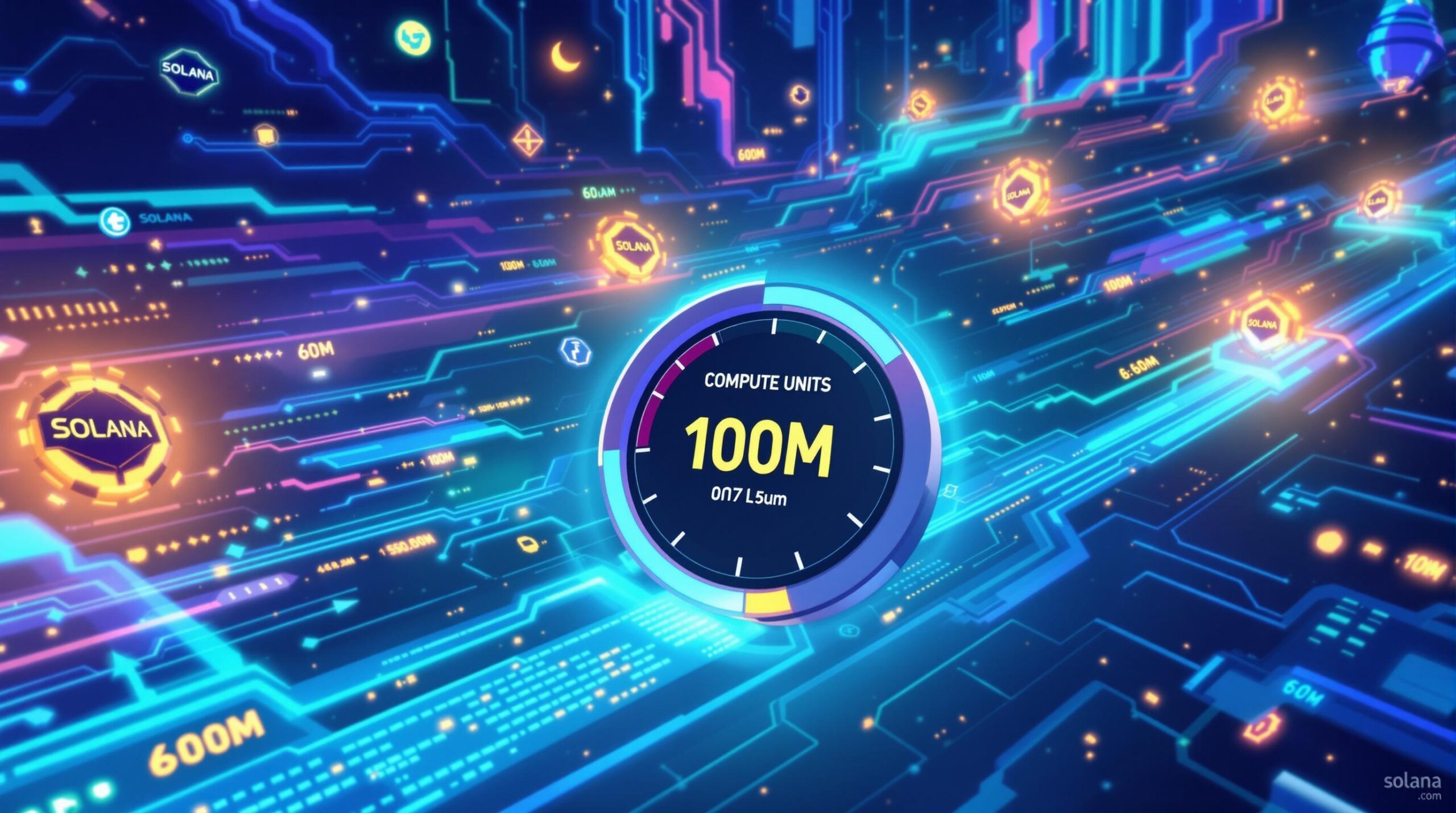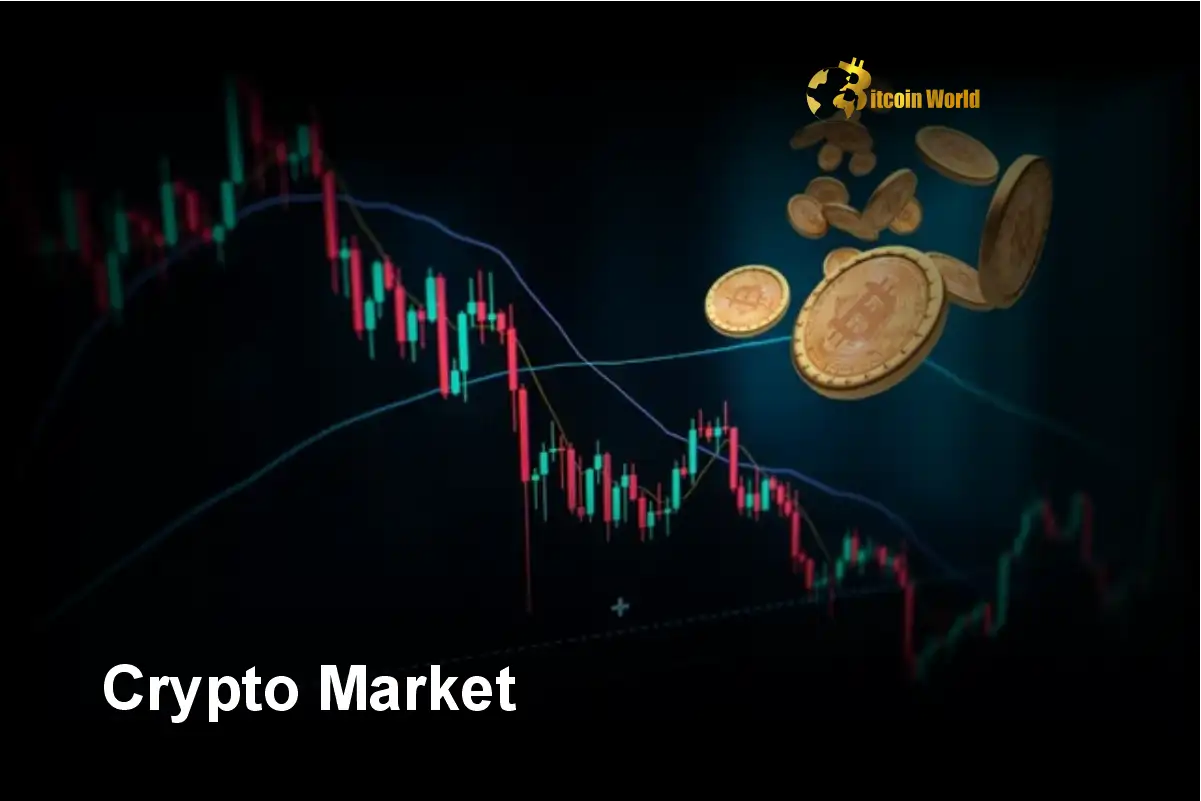BitcoinWorld

Solana Network Capacity: A Revolutionary Leap with SIMD-0286 Upgrade
Are you ready for a major upgrade that could redefine the future of decentralized applications? The Solana blockchain, already renowned for its speed and efficiency, is on the cusp of a significant transformation. A groundbreaking proposal, Solana Improvement Document 0286 (SIMD-0286), aims to dramatically boost the Solana network capacity, promising a new era of performance and scalability. This isn’t just a minor tweak; it’s a potential game-changer for how transactions are processed and how developers build on the network.
What is SIMD-0286 and How Does it Boost Solana Network Capacity?
At the heart of Solana’s proposed upgrade lies a critical metric: Compute Units (CUs). Think of Compute Units as the fuel that powers transactions and smart contract executions on the Solana blockchain. Each operation, from a simple token transfer to a complex DeFi swap, consumes a certain number of CUs. Currently, the Solana network has a block limit of 60 million CUs. SIMD-0286 proposes to increase this limit by a staggering 66%, pushing it to 100 million CUs per block. This means:
- More Transactions Per Block: A higher CU limit directly translates to more computational work that can be packed into each block. This allows the network to process a greater volume of transactions and smart contract calls concurrently.
- Enhanced Throughput: With more CUs available per block, the overall throughput of the network—the number of operations it can handle per second—is expected to see a substantial increase. This is crucial for supporting high-demand applications.
- Improved Efficiency: By allowing blocks to utilize more computational resources, the network can potentially become more efficient in how it allocates and processes various operations, leading to smoother performance.
This isn’t just a theoretical increase; it’s a practical step towards unlocking even greater potential for the Solana network capacity, making it more robust for widespread adoption.
Why is Increasing Solana Network Capacity Crucial for Growth?
In the fast-paced world of blockchain, scalability is king. As more users and developers flock to decentralized platforms, the underlying infrastructure must be able to keep up with demand. Increasing the Solana network capacity is not merely about handling more transactions; it’s about fostering an environment where innovation can truly flourish. Here’s why this upgrade is so vital:
1. Fueling Decentralized Application (DApp) Growth:
- Gaming: Web3 gaming requires incredibly high throughput for seamless gameplay, in-game transactions, and NFT interactions. Increased CUs can provide the necessary bandwidth for complex, high-volume games.
- DeFi: Decentralized Finance protocols often involve intricate smart contract interactions and rapid trading. Higher capacity ensures lower latency and reduced slippage for users.
- Social Media & Enterprise Solutions: As more mainstream applications consider blockchain integration, the network needs to handle millions of daily active users and their interactions without congestion.
2. Enhancing User Experience:
Imagine trying to use a popular app only to find it slow, unresponsive, or frequently failing. This is often the experience on congested blockchain networks. A significant boost in Solana network capacity means:
- Faster Confirmations: Transactions get processed and finalized quicker, leading to a more fluid user experience.
- Reduced Failed Transactions: With more room in each block, the chances of transactions failing due to network congestion are significantly lowered.
- Lower Transaction Costs: While Solana already boasts low fees, increased capacity can help maintain or even further reduce transaction costs during peak demand by alleviating network pressure.
3. Maintaining a Competitive Edge:
The blockchain landscape is highly competitive, with various Layer 1 solutions vying for developer and user adoption. Solana’s core value proposition has always been its speed and low cost. By proactively increasing its capacity, Solana reinforces its position as a leading high-performance blockchain, attracting new projects and solidifying its appeal against rivals.
What are the Potential Challenges and Considerations for Boosting Solana Network Capacity?
While the prospect of increased capacity is exciting, implementing such a significant upgrade isn’t without its considerations. Every major network change requires careful planning and execution to ensure stability and security. Here are some potential challenges and aspects to keep in mind:
| Challenge Area | Description | Mitigation/Consideration |
|---|---|---|
| Validator Requirements | Higher CU limits could potentially demand more powerful hardware from validators to process and validate larger blocks efficiently, raising the barrier to entry for new validators. | Monitoring validator participation, optimizing client software, and exploring hardware incentives to maintain decentralization. |
| Network Stability | Introducing a 66% increase in computational load requires rigorous testing to ensure the network remains stable, resilient, and free from new bugs or vulnerabilities. | Extensive testing on testnets, phased rollouts, and close monitoring post-implementation. |
| Community Consensus | Like all major upgrades, SIMD-0286 requires broad support from the Solana community and validators to be successfully implemented. | Transparent communication, open discussions, and a clear voting process to ensure community buy-in. |
| Security Implications | Any change to core network parameters could theoretically introduce new attack vectors if not thoroughly vetted. | Comprehensive security audits, expert review, and bug bounty programs. |
These challenges are not insurmountable but highlight the need for a thoughtful and collaborative approach to ensure the upgrade benefits the entire ecosystem without compromising its foundational principles.
The Road Ahead: What’s Next for Solana Network Capacity?
The journey for SIMD-0286 doesn’t end with its proposal. The next crucial steps involve the Solana community, particularly the validators, who will ultimately vote on its adoption. If approved, the implementation would follow, likely rolled out through a series of network upgrades. This process typically involves:
- Community Review and Feedback: The proposal will undergo intense scrutiny and discussion within the Solana developer and validator communities.
- Validator Voting: Validators, who run the nodes that secure the network, will cast their votes on whether to adopt the changes proposed in SIMD-0286. Their collective decision is paramount.
- Phased Rollout: If approved, the upgrade might be rolled out in phases to ensure smooth integration and minimize disruption.
- Continuous Monitoring: Post-implementation, the network’s performance, stability, and resource utilization will be continuously monitored to ensure the desired benefits are realized and any unforeseen issues are promptly addressed.
This increase in Solana network capacity is a testament to the network’s commitment to continuous improvement and its ambitious vision for supporting a truly decentralized and high-performance future. It positions Solana to handle the next wave of adoption and innovation in the blockchain space.
The SIMD-0286 proposal represents a significant milestone in Solana’s evolution. By strategically increasing its Compute Unit limits, the network is not just expanding its raw processing power but is actively preparing for a future where decentralized applications are as seamless and ubiquitous as their centralized counterparts. This proactive step towards bolstering Solana network capacity underscores the platform’s dedication to scalability, user experience, and fostering a robust ecosystem for developers and users worldwide. The coming months will be crucial as the community weighs in on this transformative upgrade, potentially paving the way for unprecedented growth and efficiency on the Solana blockchain.
Frequently Asked Questions (FAQs)
Q1: What are Compute Units (CUs) on Solana?
A1: Compute Units (CUs) are the standard measure of computational resources consumed by transactions and smart contracts on the Solana blockchain. Think of them as the ‘gas’ required to execute operations, ensuring fair resource allocation and preventing network abuse.
Q2: How much will SIMD-0286 increase Solana’s capacity?
A2: The SIMD-0286 proposal aims to increase the block limit from 60 million Compute Units (CUs) to 100 million CUs. This represents a substantial 66% increase in the computational capacity per block, directly boosting the overall Solana network capacity.
Q3: What are the main benefits of this capacity increase for users and developers?
A3: For users, benefits include potentially faster transaction confirmations, fewer failed transactions during peak demand, and continued low transaction costs. For developers, it means more room to build complex and resource-intensive DApps, enabling more innovative applications in areas like gaming, DeFi, and enterprise solutions.
Q4: Will this upgrade affect network decentralization or validator requirements?
A4: While increasing capacity could theoretically demand more powerful hardware from validators to keep up, the Solana community and developers are actively working on optimizations and monitoring strategies to ensure that the network remains decentralized and accessible for a broad range of validators. Rigorous testing will precede any rollout.
Q5: When is SIMD-0286 expected to be implemented?
A5: The implementation timeline for SIMD-0286 depends on community review, validator voting, and thorough testing. If approved, it would likely be rolled out through a series of network upgrades in the coming months, following a careful and phased approach to ensure network stability.
Did you find this article insightful? Share it with your friends and fellow crypto enthusiasts on social media to spread the word about Solana’s exciting journey towards enhanced capacity and a more scalable future!
To learn more about the latest Solana ecosystem trends, explore our article on key developments shaping Solana’s future innovation.
This post Solana Network Capacity: A Revolutionary Leap with SIMD-0286 Upgrade first appeared on BitcoinWorld and is written by Editorial Team





